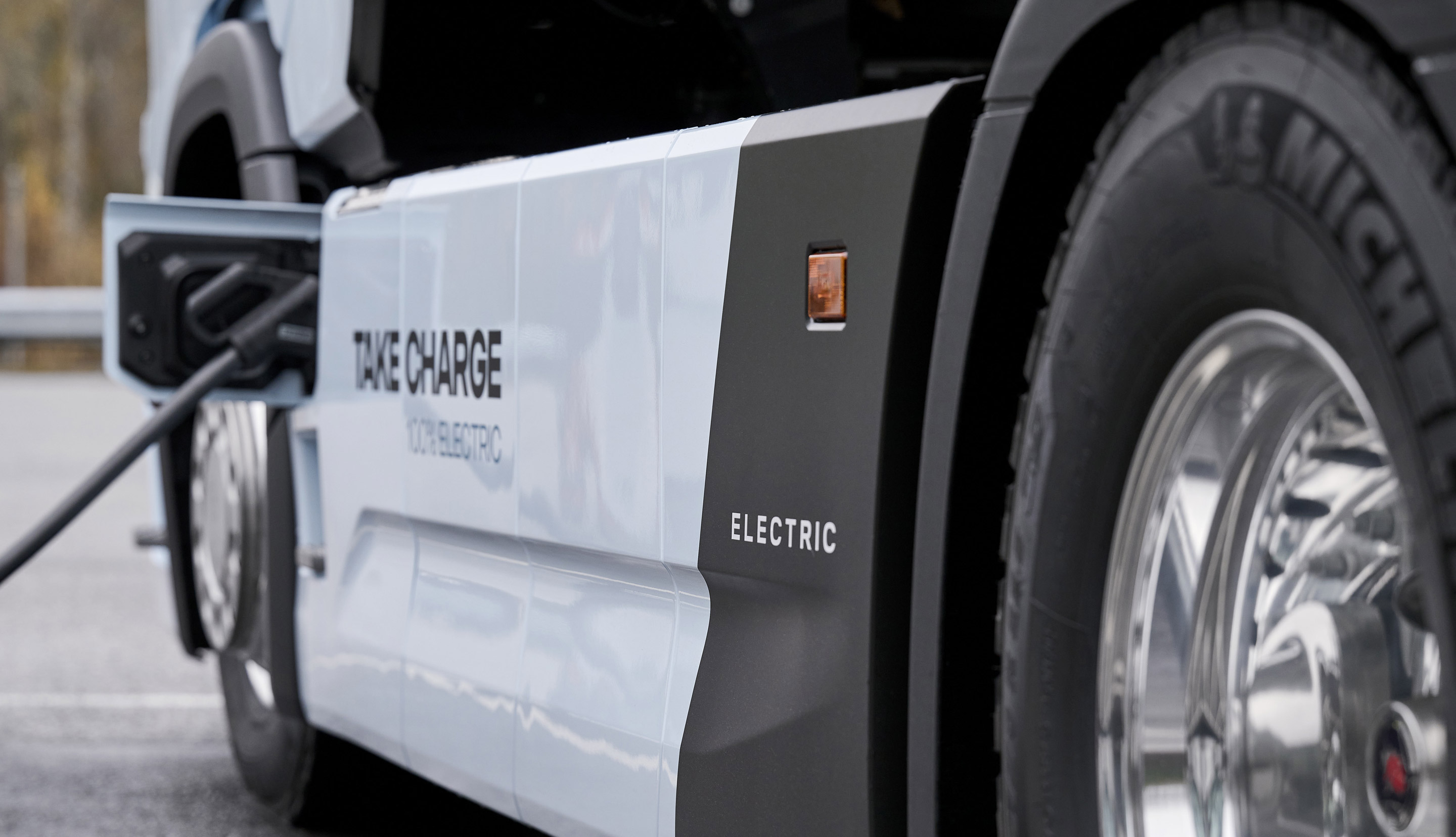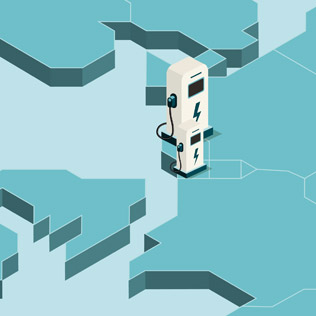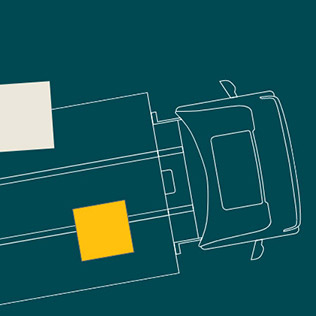Myths about electric trucks
When it comes to electric trucks with batteries, some misconceptions still persist. We dispel a few of the most common myths.

Myth 1
Trucks powered by batteries have too little range, and their batteries take too long to charge.
Fact 1
Modern battery electric vehicles already offer a range of approximately 400 kilometers on a single charge. A truck travelling long-haul in Europe covers an average of 500 kilometers per day. Drivers are also required by law to take a 45-minute break after 4.5 hours of driving. If they use this driving break to charge their vehicle, even the current range is not an issue. Plus there is still a lot of potential in the development of batteries, meaning further progress in terms of range and charging times can be expected in the next few years.
Today
400 km
In the future
1,000 km
Myth 2
Batteries are heavy, so electric trucks can’t carry as much cargo.
Fact 2
Today’s batteries weigh around four tons, depending on the configuration. That’s approximately double the weight of a diesel powertrain. However, because an electric truck doesn’t need the components of this powertrain, and because the EU allows zero-emission vehicles to weigh an additional two tons, there is little or no loss of payload, depending on the axle load distribution. Vehicles carrying volume freight or groupage transport don’t fully utilize their permissible total weight anyway, so the battery is not an additional factor.
Weight of one battery
4 t
Myth 3
Battery electric trucks emit more CO2 during production than their diesel counterparts and cannot compensate for the additional emissions over their service life.
Fact 3
It’s true that electric trucks emit more CO2 during production than their diesel counterparts. However, they make up for this disadvantage very quickly. According to a study by Scania, it only takes them 68,000 kilometers, based on the EU’s energy mix in 2016. On long journeys, this mileage would take around half a year.
However, not only do modern batteries generate far fewer emissions during production, they are also designed for a total mileage of 1.5 million kilometers or more. At the same time, the industry is aiming for 100% of the electricity used to be green and for very high recycling rates. This makes it possible to reduce total emissions from production and use to almost zero.
Today
68,000 km
Myth 4
Especially in times of rising electricity prices, electricity as a source of power for trucks is too expensive.
Fact 4
Ultimately, the total energy costs per ton-kilometer determine how efficient a drive system is. Even if the price increases a lot in the future, it will still be more efficient and thus much cheaper to use electricity from a battery as a source of power than other alternative fuels. Factors like lower maintenance costs and legal incentives such as the toll exemption reduce the overall costs, also known as the total cost of ownership, further.
Myth 5
The influx of electric trucks will overload the power grid, causing it to collapse.
Fact 5
For the most part, electric trucks are charged at times when they place less strain on the power grid than is generally assumed. For example, many of these vehicles are charged overnight in depots, when demand for electricity is low. At the same time, drivers often stop at public fast chargers at midday, which is perfect timing for the peak in solar power supply. And since the trucks’ geographic distribution is fairly homogenous, this means there are more and more days on which they can actually relieve the grid or avoid shutdowns of solar systems. Fundamentally, battery electric drives are far more efficient than other zero-emission drives such as fuel cells, meaning they only require a fraction of the energy to deliver the same performance.
Myth 6
It’s not worth focusing on batteries. The energy system of the future will be based on green hydrogen.
Fact 6
Hydrogen will play an important role in the energy system of the future, but not necessarily in every application. It will be decades before green hydrogen is available in sufficient quantities and the corresponding infrastructure is in place. Until then, energy-intensive sectors such as the chemical industry in particular will use hydrogen to achieve their climate targets. It will often be cheaper for these sectors to access hydrogen than it will be for long-haul transportation. For the latter, it is more effective and more energy-saving to use renewable electricity directly in battery-powered trucks. However, hydrogen can also play an indirect role here, as it can be converted back into electricity during peak load times. This will almost always be more cost-effective than just using it in trucks at random times.
Myth 7
It will take some time for electric commercial vehicles to become standard and be used across the board.
Fact 7
Electrification is already underway and gathering more and more momentum. On the one hand, technology is developing rapidly. On the other, sustainability targets set by customers and legal requirements are putting pressure on fleet operators. In the EU, CO2 emissions from new heavy-duty commercial vehicles have to be reduced by 45% by 2030 and by as much as 90% by 2040. This will cause the market share of zero-emission vehicles to increase quickly, and batteries are the cheapest, fastest, and most ecological solution in the vast majority of cases.
CO2 reduction
by 2030
45%
CO2 reduction
by 2040
90%




